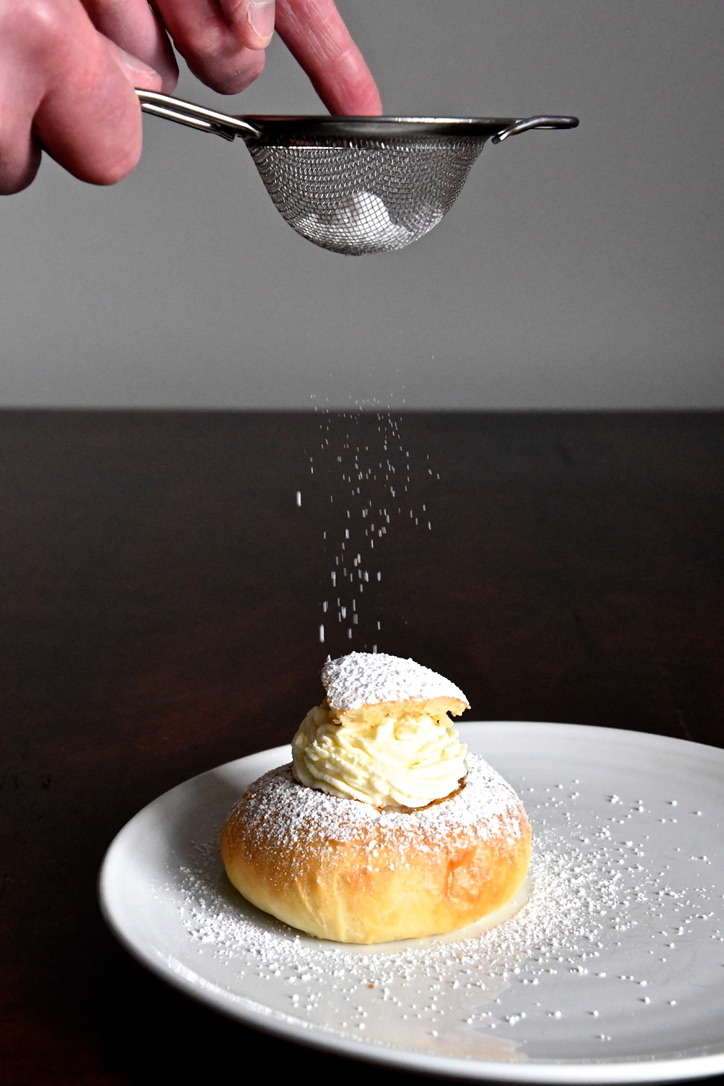I based this recipe for semlor on one that Karin Jonsson very kindly shared with us, after we spent far too long admiring photographs of her semlor (the plural of semla) online. Karin is a Swedish chef and baker who runs a beautiful bakery in Orkney, the Orkney Sourdough Co. We have been hoping to make a trip up to visit Orkney for some time, but since we can’t make it to her bakery at present, we decided to try making these delicious buns at home instead! These Swedish lenten buns are a Shrove Tuesday tradition, but I gather they are also enjoyed in general starting from around January and up until Easter.
Check the instructions for the type of dried yeast you are using – some types of dried yeast need to be added to liquid to activate them, others are designed to go straight into the dry ingredients with the flour and will not work if added to liquid first. Having got this the wrong way round myself in the past and killed all the yeast off (resulting in disappointingly flat buns) I’m speaking from experience here!
Thank you so much Karin for helping us to make semlor and sharing your knowledge with us. Karin recommends a strong white bread flour, she uses our No. 4. Her other piece of key advice is these buns must be enjoyed immediately while fresh! Once you’ve filled them don’t store them in the fridge. If you have more buns than you need you can freeze them, and then defrost when you want to make a fresh semla.
I have adapted the original recipe a little into the below, to be made in a home kitchen. This version makes 15-18 buns.
A brief note on hydration – Karin’s original recipe creates a very soft, high-hydration dough, so if you are not used to handling these or would like to create a firmer dough I would recommend scaling the milk down to about 325g milk (65% hydration) and working up from there if you want to. Feel free to adapt hydration to your own personal preferences.

